Two identical balls A and B. each of mass 2kg and radius R, are suspended vertically from inextensible strings as shown in Fig. The third ball C of mass 1kg and radius r=(√2−1)R falls and hits A and B symmetrically with 10m/s. Speed of both A and B just after the collision is 3m/s.

Impulse provided by each sting during collision is
6√2Ns
12Ns
3√2Ns
6Ns
The correct Answer is:D
impulse provided by each string
I1=Isinθ=6Ns
Topper's Solved these Questions
- BOOK - CENGAGE PHYSICS ENGLISHCHAPTER - CENTRE OF MASSEXERCISE - Integer16videos
CENTRE OF MASS
- BOOK - CENGAGE PHYSICS ENGLISHCHAPTER - CENTRE OF MASSEXERCISE - Fill In The Blanks2videos
CENTRE OF MASS
- BOOK - CENGAGE PHYSICS ENGLISHCHAPTER - CENTRE OF MASSEXERCISE - Assertion - Reasoning2videos
CENTRE OF MASS
- BOOK - CENGAGE PHYSICS ENGLISHCHAPTER - CALORIMETRYEXERCISE - Solved Example13videos
CALORIMETRY
- BOOK - CENGAGE PHYSICS ENGLISHCHAPTER - DIMENSIONS & MEASUREMENTEXERCISE - Integer2videos
DIMENSIONS & MEASUREMENT
Similar Questions
Two identical balls A and B. each of mass 2kg and radius R, are suspended vertically from inextensible strings as shown in Fig. The third ball C of mass 1kg and radius r=(√2−1)R falls and hits A and B symmetrically with 10m/s. Speed of both A and B just after the collision is 3m/s.

speed of C just asfter collision isView SolutionTwo identical balls A and B. each of mass 2kg and radius R, are suspended vertically from inextensible strings as shown in Fig. The third ball C of mass 1kg and radius r=(√2−1)R falls and hits A and B symmetrically with 10m/s. Speed of both A and B just after the collision is 3m/s.
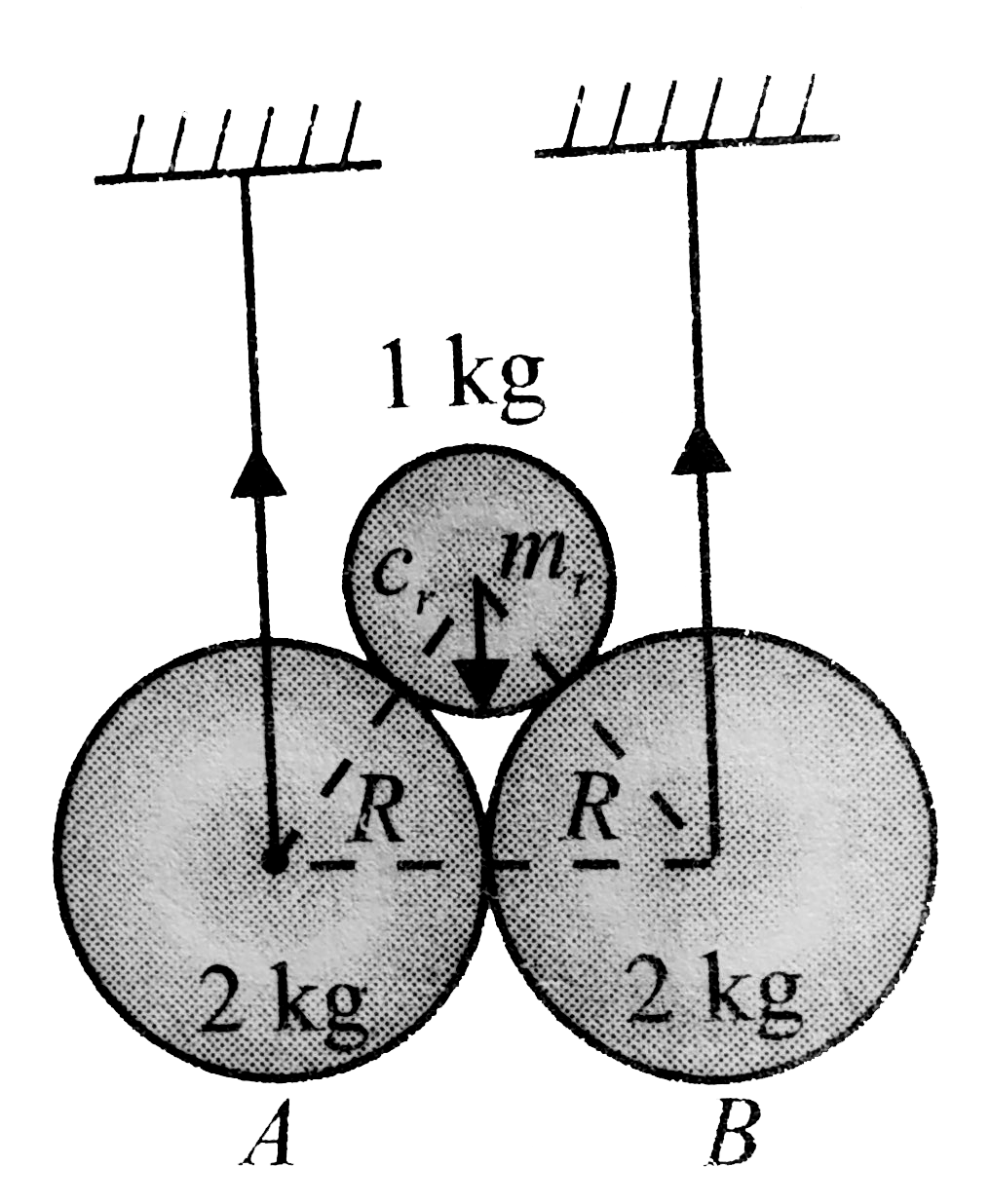
The value of coefficient of restitution isView SolutionA ball of mass 1kg strikes a heavy plarform elastically, moving upwards with a velocity of 5m/s . The speed of the ball just before the collision is 10m/s downwards. Then the impulse imparted by the platform on the ball is
 View Solution
View SolutionThree solid spheres each of mass m and radius R are released from the position shown in Fig. What is the speed of any one sphere at the time of collision?
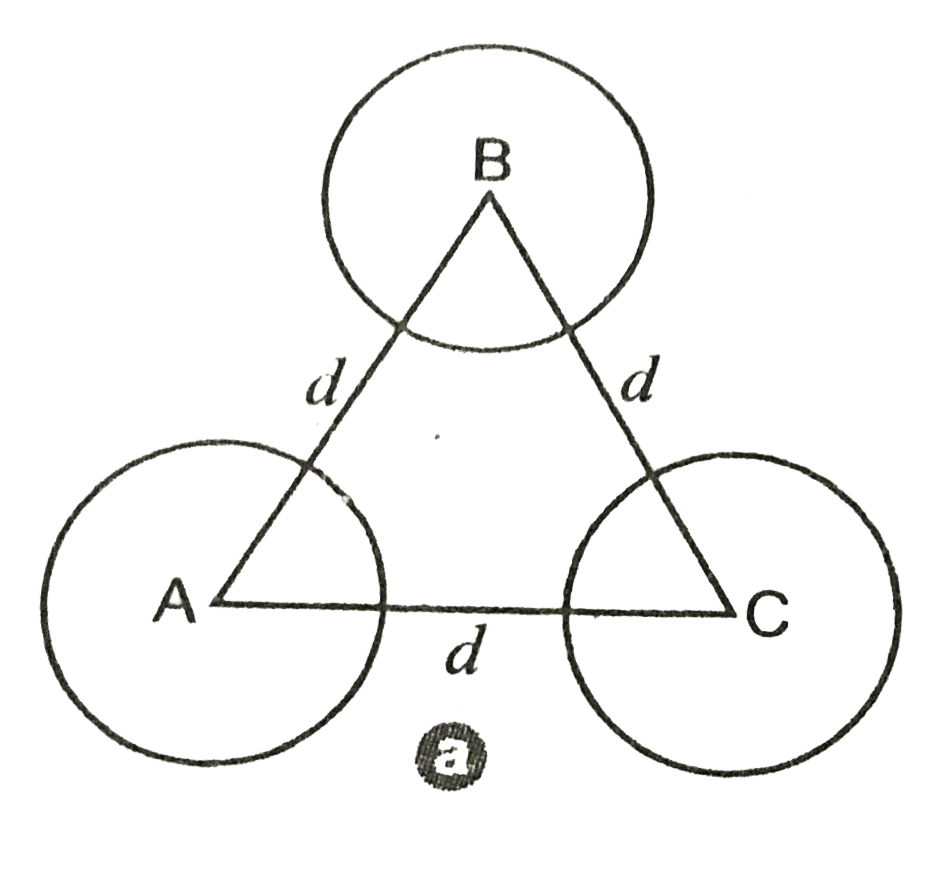 View Solution
View SolutionIn the figure shown, the two identical balls of mass M and radius R each, are placed in contact with each other on the frictionless horizontal surface. The third ball of mass M and radius R/2, is coming down vertically and has a velocity =v0 when it simultaneously hits the two balls and itself comes to rest. Then, each of the two bigger balls will move after collision with a speed equal to
 View Solution
View SolutionA particle of mass m strikes a disc of radius R and mass m with a speed u as shown in the figure. What is the speed of the particle just after the collision if the collision is perfectly inelastic ?
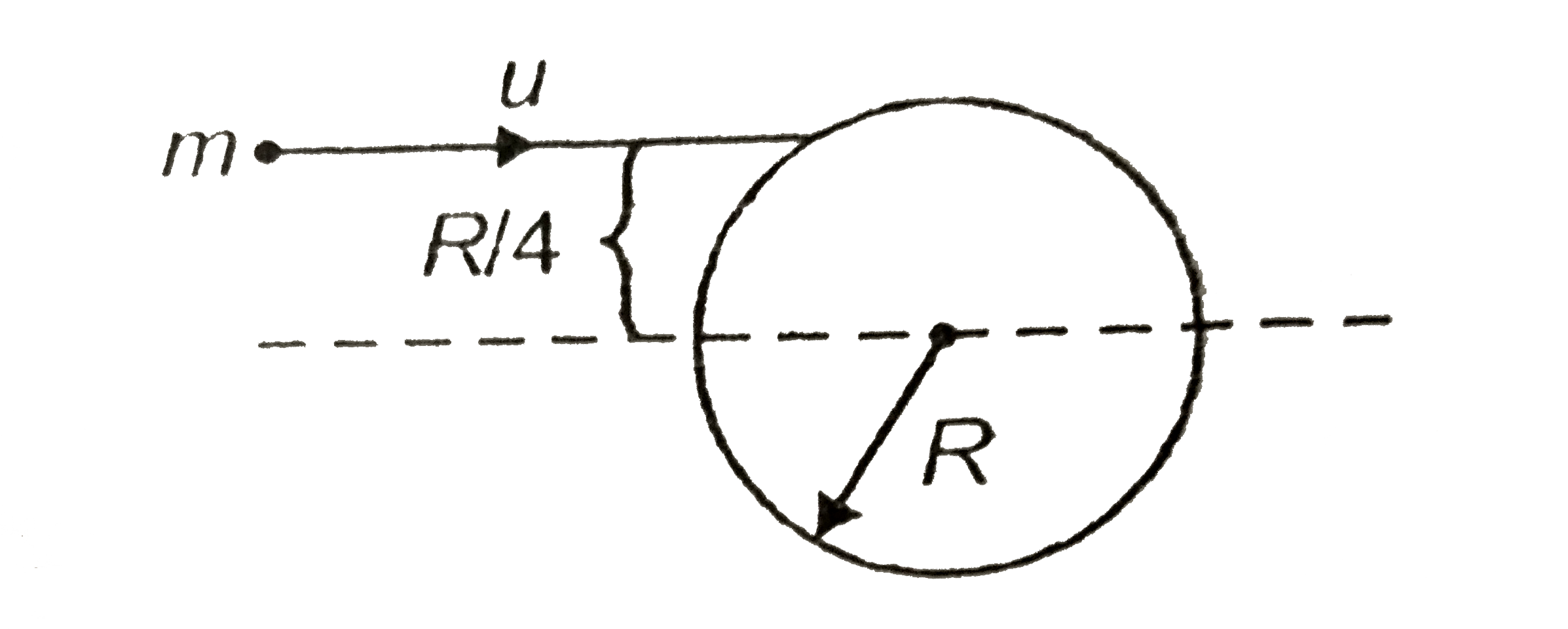 View Solution
View SolutionTwo identical blocks A and B each of mass 2kg are hanging stationary by a light inextensible flexible string, passing over a light and frictionless pulley, as shown in Fig. A shell C of mass 1kg moving vertically upwards with velocity 9m/s collides with block B and gets stuck to it.
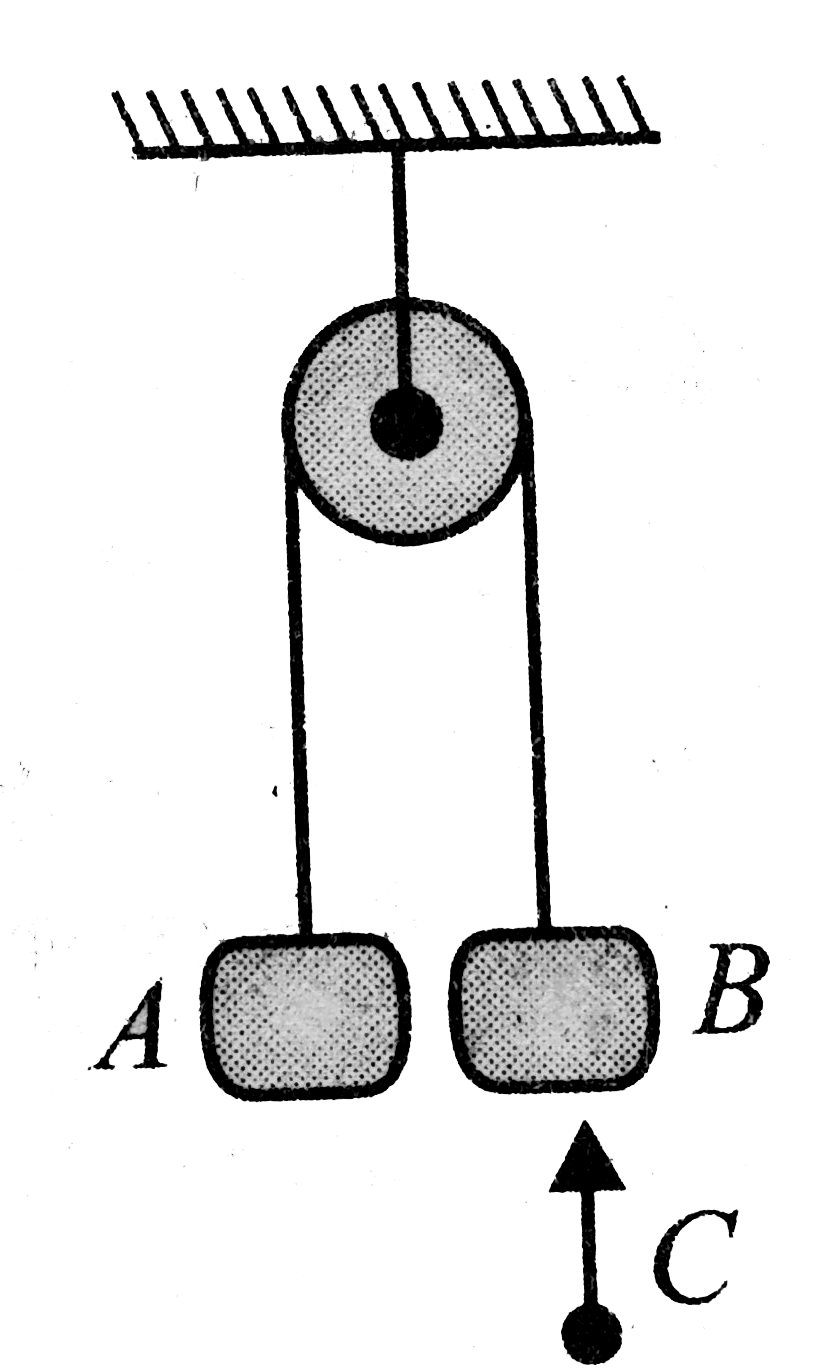
Calculate the time after which block B starts moving downwards.View SolutionTwo smooth balls A and B, each of mass m and radius R, have their centre at (0,0,R) and (5R,-R,R) respectively, in a coordinate system as shown. Ball A, moving along positive x-axis, collides with ball B. Just before the collision, speed of ball A is 4m/s and ball B is stationary. The collision between the balls is elastic. Velocity of the ball A just after the collsion is
A. (ˆi+√3ˆj)m/s
B. (ˆi−√3ˆj)m/s
C. (2ˆi+√3ˆj)m/s
D. (2ˆi+2ˆj)m/sView SolutionA 10 kg steel ball is suspended by two strings as shown. The tensions in the two strings are: (g=9.8 m/s2)
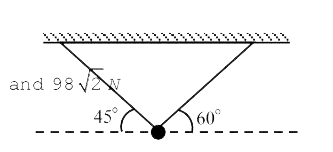 View Solution
View SolutionTwo smooth balls A and B, each of mass m and radius R, have their centers at (0, 0, R) and at (5R, -R, R) respectively, in a coordinate system as shown. Ball A, moving along positive x axis, collides with ball B. Just before the collision, speed of ball A is 4m/s and ball B is stationary. The collision between the ball is elastic.

Impulse of the force exerted by A and B during the collision, is equal toView Solution

